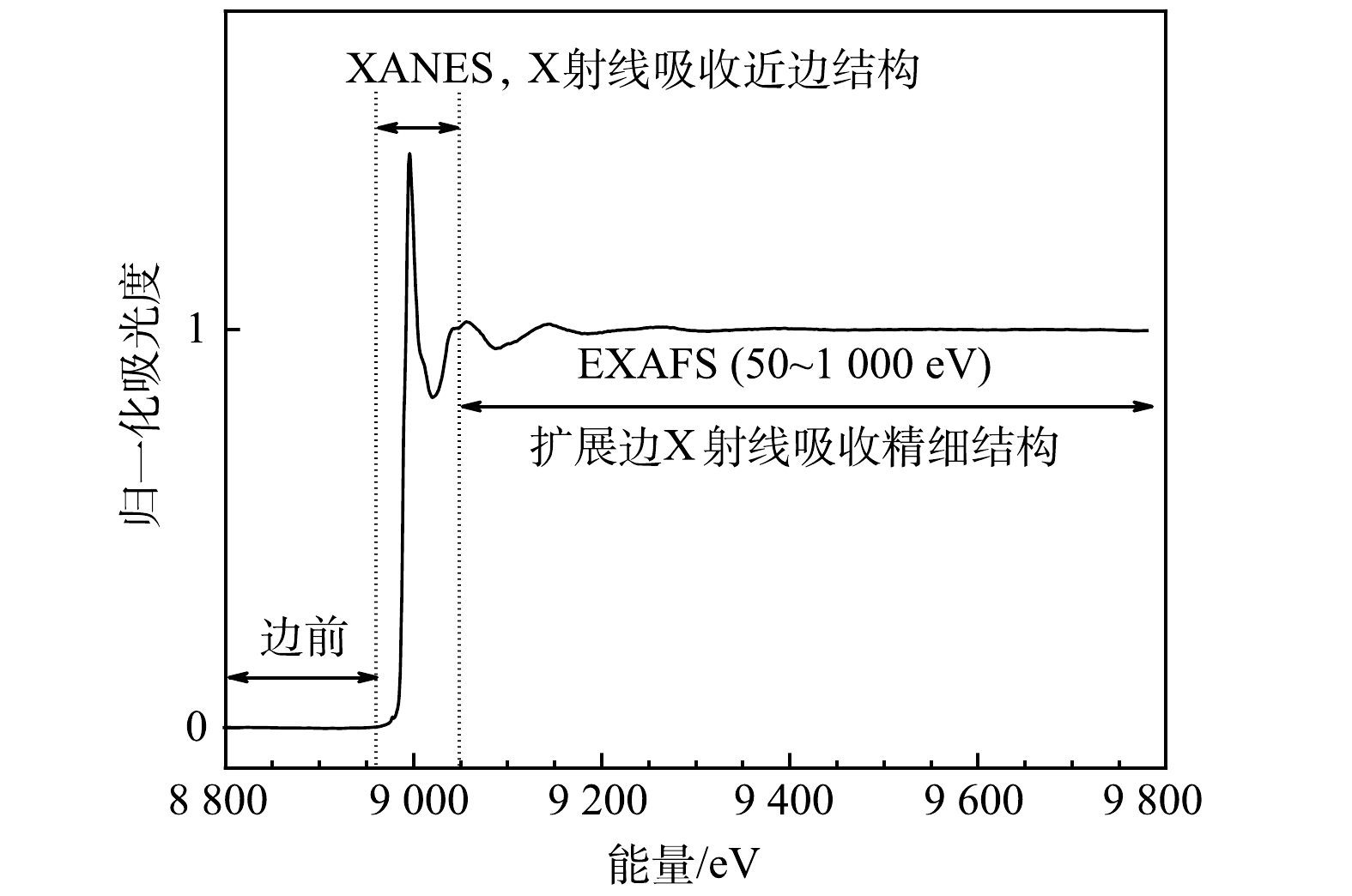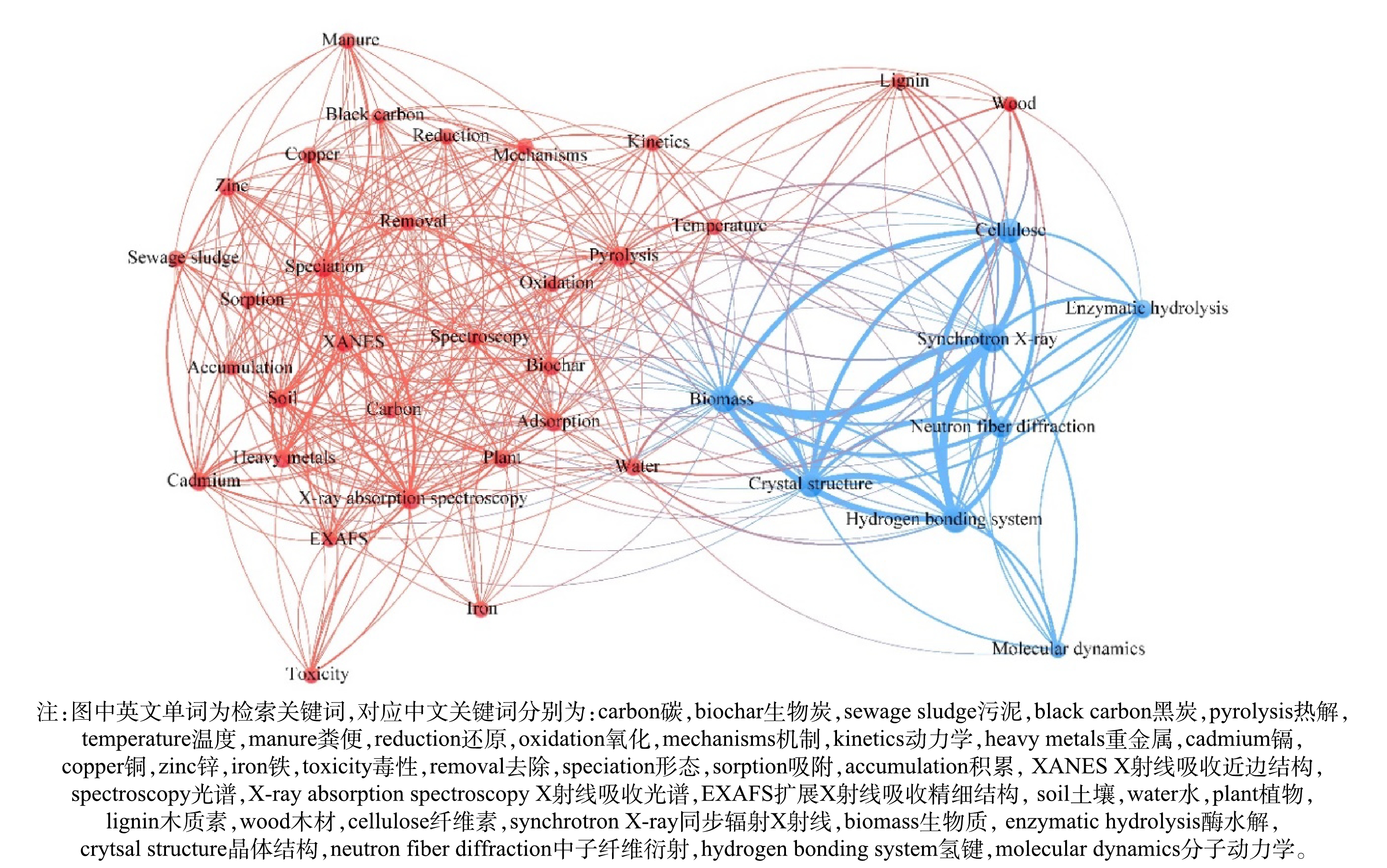-
硝化菌是活性污泥体系中起硝化作用的主要因素,但硝化菌生长缓慢,易受外界环境影响,pH、温度、溶解氧(dissolved oxygen, DO)和C/N等会使硝化菌活性受到抑制[1]。研究团队在对全国58座污水处理厂进行的全流程调研分析中发现,污水处理厂平均硝化速率仅为2.9 mg·(g·h)−1(以VSS计),远低于理论硝化速率4 mg·(g·h)−1 (GB 50014-2006)。这可能是因为硝化菌易受环境影响导致菌体流失[2],因此,将硝化性能良好的活性污泥进行固定化处理具有重要意义。
硝化菌富集包括纯菌扩大培养和活性污泥富集培养2种主要培养方式[3]。使用活性污泥富集法中的序批式间歇反应器(sequencing batch reactor, SBR)富集方法进行硝化菌富集时,具有成本低、菌种稳定、生物相容性好等优点。该富集方法通过调节水质中氨氮负荷,抑制异养型菌属的增长,促进硝化菌的繁殖,达到富集硝化菌的目的,即依靠硝化菌自我代谢提高硝化菌占比,但是富集效果相对较弱。
PVA水凝胶空间网络稳定,有丰富的孔隙结构,微生物亲和性好,可用作活性污泥包埋剂[4],但PVA凝胶球总孔容相对较小且胶连过程中易发生曳尾现象。而聚氧化丙烯三醇是一种聚醚多元醇,常用作增韧剂[5],可用作凝胶球改性。
本研究通过基于降低C/N比的活性污泥富集法提高活性污泥硝化性能,并将驯化后的活性污泥制作成改性凝胶包埋颗粒,分析比较了改性材料性能和活性污泥在不同阶段的微生物群落变化及污泥活性指标,以期为研究活性污泥包埋颗粒在废水治理领域的可行性提供参考。
全文HTML
-
以无锡市某市政污水处理厂好氧池活性污泥(activated sludge, AS)作为接种污泥,采用SBR反应装置进行培养驯化。驯化过程中,调节进水COD为300 mg·L−1;TP为4 mg·L−1;进水
NH+4 -N浓度以5 d为1个周期,每周期进行1次调整,依次为25、35、45 mg·L−1,通过此方式改变进水碳氮比,实现硝化菌的富集,并添加一些稀有元素,促进活性污泥中微生物更好地生长繁殖。培养过程中不断添加适量Na2CO3溶液,调节进水pH为7.5~8.5,以满足硝化菌最佳生存条件。 -
实验选择PVA作为主要的包埋材料,添加少量的海藻酸钠(sodium alginate, SA),以缓解PVA的附聚性,并添加少量PPT (PPT是一种聚醚多元醇,常用作增韧剂[6]),改善凝胶球的机械强度和传质性能,同时通过延时包埋等方法来改善材料的水溶膨胀性。实验选择饱和硼酸CaCl2溶液作为交联剂,通过NaHCO3调节交联剂的pH,冷冻-解冻来增加固定化小球的强度,并采用Na2SO4溶液进一步交联,以减轻硼酸对微生物活性的影响。包埋颗粒的制备包括以下5个步骤。
1)将PVA(国药1799型)、去离子水分别以体积分数为10%和90%于烧杯中混合,采用电磁炉加热2~3 h。在加热过程中,须不断搅拌使溶液受热均匀,直至PVA颗粒完全溶解后,停止加热并冷却至室温。
2)驯化后的硝化污泥在3 000 r·min−1条件下离心15 min,再用0.9% NaCl溶液冲洗,重复该操作2次。
3)将浓缩后的硝化污泥、SA、PPT以及静置后的混合物以体积比10∶1∶0.2∶88.8混合均匀后,滴入含2%氯化钙的饱和硼酸溶液形成球形颗粒,于4 ℃冰箱中放置30 min交联固化,然后将颗粒滤出,用0.9% NaCl溶液清洗表面残留的硼酸溶液。
4)为增加包埋颗粒的机械强度,将颗粒在−20 ℃的冰箱里反复冻融3次。
5)冻融后的颗粒用去离子水清洗,放置于模拟生活污水中,于4 ℃条件下保藏待用。
-
取约10 mL泥水混合液,50 W功率超声1 min,后向混合液中加入60 μL甲酰胺及5 mL NaOH溶液(1 mol·L−1),并于4 ℃条件下振荡3 h后,在4 ℃、10 000 r·min−1条件下离心15 min,所得上清液用0.22 μm滤膜过滤,得到污泥的EPS。采用考马斯亮蓝法和蒽酮-硫酸比色法[7]对胞外聚合物(extracellular polymeric substances,EPS)中蛋白(PN)和多糖(PS)含量进行测定。
将待测包埋凝胶球在纯水中曝气30 min,以去除颗粒内部及表面的氨氮,烧杯中配置一定氨氮浓度的模拟废水,颗粒与废水混合的体积比为1∶4。调节溶液pH小于5,以抑制包埋颗粒的硝化反应;采用恒温水浴锅将烧杯中混合液温度控制在(30.0±0.1) ℃,采用磁力搅拌器确保溶液充分混合,测试氨氮浓度的变化,计算凝胶颗粒氨传质系数。将包埋颗粒与去离子水以1∶4的体积比混合,盛满250 mL的溶氧瓶,持续通入氮气2 h,使包埋颗粒内部的溶解氧完全消耗,采用恒温水浴锅控制温度为(30.0±0.1) ℃,采用磁力搅拌器使溶液充分混合,溶解氧仪记录混合液中溶解氧的变化,计算凝胶颗粒氧传质系数。
在测定氨氧化速率(ammonia uptake rate, AUR)时,将活性污泥或含有活性污泥的物体放入到碘量瓶中,碘量瓶中加入适量NH4Cl和NaHCO3,曝气并维持DO约为2 mg·L−1,同时不断搅拌,保证溶液与活性污泥混合均匀,通过测量碘量瓶中混合液在不同时间点的氨氮浓度,并结合混合液中活性污泥的浓度计算氨氧化速率。在测定比耗氧速率(specific oxygen uptake rate, SOUR)时,将活性污泥或含有活性污泥的物体放入到碘量瓶中,碘量瓶中加入模拟生活污水并充分曝气,然后将碘量瓶密封,同时不断搅拌,保证溶液与活性污泥混合均匀,通过测量碘量瓶中混合液在不同时间点的DO值,并结合混合液中活性污泥的浓度计算比呼吸速率。
污泥粒径采用BT-2003百特激光粒度分布仪分析系统测试;热重分析采用TGA5500型热重分析仪测试,温度为30~500 ℃,升温速率为10 ℃·min−1;SEM采用SU8010型微生物扫描电镜测试;BET采用Belsorp-Max型全自动比表面及孔隙分布测定仪测试;DO浓度使用WTW FDO 925-3便携式多参数水质分析仪测试;
NH+4 -N浓度采国标法[8]测定;样品DNA的提取采用土壤基因组提取试剂盒(柱形,艾比根),并送样到上海晶能生物有限公司完成16S rRNA基因的高通量测序和微生物群落分析。
1.1. 活性污泥培养
1.2. 凝胶颗粒制备
1.3. 分析方法
-
由图1和表1可以看出,在不断提高进水中氨氮占比的条件下,活性污泥对氨氮的去除效率略有降低,由100%降低至92%,再降低至85%左右;但单位时间内氨氮的去除量在提升,由25 mg·L−1提升至32 mg·L−1,再提升至38 mg·L−1,说明活性污泥的氨氮去除效果在驯化过程中得到了提高。经计算,经过15 d的驯化培养,活性污泥的AUR由2.044 mg·(g·h)−1(以VSS计)提升至2.645 mg·(g·h)−1,SOUR由19.317 mg·(g·h)−1(以VSS计)提升至21.868 mg·(g·h)−1。硝化性能较原活性污泥有了明显的提高,可以用作制备生物包埋凝胶球。
由图2和图3可以看出,EPS对活性污泥的理化性质有较大影响,蛋白和多糖是其主要成分。在驯化过程中,随着氨氮投加量的提高,水质C/N比不断降低,多糖和蛋白的浓度也均有不同程度降低,PN/PS不断提高。这是因为在低C/N条件下,由于碳源的缺乏,微生物将多糖用作营养物质分解使用。在驯化培养过程中,过量的曝气使活性污泥絮体破坏,导致活性污泥粒径相对减少,粒径分布向低粒径移动,中位径从最初的28.38 μm降低到27.09 μm。蛋白是微生物絮体骨架的重要成分,因此,蛋白含量也降低。C/N不断降低,微生物所需碳源增多,对多糖的消耗也增多。驯化过程中曝气程度保持稳定,在曝气过程中,活性污泥逐渐适应反应体系,蛋白降低幅度相对较小。因此,多糖降低幅度大于蛋白,PN/PS不断升高。
-
凝胶球半径约为3.4 mm,单颗凝胶球质量冻干前约为112.26 mg,冻干后约为33.85 mg,改性后粒径、质量与改性前大致相等。
由图4可以看出,在常温条件(30~50 ℃)下,凝胶颗粒质量损失极小,改性前后分别为1.1166%和0.8015%,说明凝胶颗粒常温下热稳定性能好。凝胶颗粒在435 ℃左右失重速率最大。等温条件下,改性凝胶球失重量和失重速率都比改性前小,说明改性后凝胶颗粒热稳定性能有所提高。
图5为改性前后凝胶球扫描电镜图,放大倍数分别为1 000、5 000和10 000倍。可以看出,改性前孔隙结构比较松散,且孔径较大;而改性后,孔隙结构相对规整,且孔径大小略有降低,这与之后测得传质速率略有降低相符合。
表2反映了未改性凝胶颗粒和PPT改性凝胶颗粒比表面积和孔径分布情况。可以看出,使用PPT改性后的凝胶球的比表面积和总孔容积增大,平均孔径减小,分别由0.315 m2·g−1、0.004 cm3·g−1和51.870 nm变为1.527 m2·g−1、0.015 cm3·g−1和39.362 nm。这说明PPT改性使凝胶包埋更加均匀,比表面积和总孔容也得到增加,能够包埋的微生物量也增多。与谭炳琰等[9]制备的PVA-SA水凝胶生物载体相比,PPT改性凝胶颗粒孔容与比表面积较小,孔径几乎相等,这说明PPT改性凝胶颗粒负载微生物量仍具有一定提升空间。许晓毅等[10]的研究结果表明,凝胶包埋颗粒比表面积增加可以增强包埋活性污泥生物硝化和脱氮性能。因此,PPT改性凝胶颗粒可以有效用作一种活性污泥包埋材料并应用于废水治理中。
包埋颗粒是一种多孔材料,凝胶颗粒内外物质会通过孔隙进行传输,直至达到平衡。氨氮和氧气是活性污泥新陈代谢必不可少的物质。氨、氧传质特性是凝胶颗粒能否用作活性污泥载体的重要评价指标。实验选取稳定运行的凝胶包埋颗粒,探究不同污泥投加方式对凝胶球氨、氧传质性能的影响。根据PU等[11]的研究,凝胶颗粒内基质有效扩散系数De的计算模型见式(1)。
式中:De为有效扩散系数,m2·s−1;Cb为主体溶液中基质的瞬时浓度,mg·L−1;Cb0为主体溶液中基质的初始浓度,取值50 mg·L−1;a为液相体积与颗粒容积比,取值4;q1为非零正根;R为颗粒半径,取值3.4×10−3 m。
为简化计算过程,将式(1)进行整理变换,变换后得式(2)。
图6反映了氨扩散实验结果,将拟合线代入式(2)得:空白凝胶球和PPT改性凝胶球的氨扩散系数De分别为4.867×10−10 m2·s−1和4.463×10−10 m2·s−1。
图7反映了氧扩散实验结果,将拟合线代入式(2)得:空白凝胶球和PPT改性凝胶球的氧扩散系数De分别为2.108×10−10 m2·s−1和1.838×10−10 m2·s−1。
由实验结果可知,添加改性剂后,凝胶球氨传质性能和氧传质性能均有不同程度的降低。这可能是由于凝胶球中添加改性材料时,凝胶球中总物质量增多,部分空隙被堵塞。曹国民等[12]测得15%PVA空白凝胶膜中氨氮扩散系数为6.9×10−10 m2·s−1。WIESMANN等[13]验证包埋微生物空心球的氧扩散系数为1×10−10~10×10−10 m2·s−1。本实验测得改性凝胶包埋颗粒的有效扩散系数均相对较低,原因可能是温度、搅拌条件以及载体成分等对凝胶包埋颗粒传质性能的影响。
-
如图8所示,包埋活性污泥后,凝胶颗粒颜色由纯白色变为黄灰色。半径约为3.4×10−3 m,质量约为114.027 mg。
由表3可知,OTU数量和Chao指数呈现递增趋势,说明驯化培养过程中,在持续曝气和营养底物充足的条件下,污泥中微生物物种丰度得到提高;包埋后由于凝胶颗粒形成较好的厌氧、缺氧和好氧环境,兼氧菌和厌氧菌有效繁殖,微生物物种丰度大幅提高。在驯化培养过程中,Shannon和Shannoneven生物多样性指数降低,包埋成活性污泥后升高,说明驯化培养过程中,水体环境更适合好氧菌和自养菌生长繁殖,因此,微生物菌群多样性及相对均匀程度均降低;包埋成凝胶球后,在较好的厌氧、缺氧和好氧环境以及模拟废水充足碳源条件下,各类微生物菌群都得以充分生长繁殖,因此,微生物菌群多样性及相对均匀程度升高,菌群相对均匀。
由图9可知,3个样品中的细菌门都比较丰富,以Proteobacteria(变形菌)、Bacterioidetes(拟杆菌)、Planctomycetes(浮霉状菌)和Acidobacteria(酸杆菌)为主。其中Proteobacteria和Bacterioidetes是活性污泥系统中的功能性菌群,主要参与有机物的降解和脱氮除磷过程[14]。Planctomycetes是一个独立的细菌门,其细胞壁缺少肽聚糖,通过细胞内膜(intracytoplasmic membrane, ICM)将细胞分为不同的部分[15]。大量的证据表明,浮霉状菌与赤潮存在一定联系,如能形成玫瑰环的浮霉状菌(如Planctomyces bekefii、Planctomyces guttaeformis和Planctomyces stramskae),在藻类或是蓝细菌的赤潮暴发后丰度上升[16],其中厌氧氨氧化菌(Anammox bacteria)是浮霉状菌中最有特点的一类菌,在环境氮循环中具有重要作用。凝胶包埋后,Acidobacteria占比略有提高,是因为凝胶包埋过程会加入一定量的硼酸试剂,而Acidobacteria是一种嗜酸菌。除此之外,Nitrospirae(硝化菌门)是活性污泥硝化反应的主要菌门,微生物群落门水平分析表明,3个阶段中Nitrospirae丰度分别为0.008、0.020、0.006,这是因为C/N低、DO高的环境适合硝化菌门的繁殖代谢,驯化培养后,硝化菌门大幅提高;但凝胶包埋后,功能性菌群在不断应对环境变化,引起微生物群落结构的改变,硝化菌门受到抑制,占比降低。
由图10可知,属水平在活性污泥培养3个阶段中变化较大。其中Nitrospira(硝化菌属)和Nitrosomonas(亚硝化菌属)在活性污泥脱氮过程中起着重要作用,3个阶段中Nitrospira丰度分别为0.008、0.020、0.006,Nitrosomonas丰度分别为0、0.002、0.004均先上升后下降,这是因为驯化培养过程成效明显,硝化类菌属丰度大幅提升;包埋后硝化类菌属丰度有所下降,这可能是因为硼酸等不利环境使硝化菌活性受到抑制。
图11反映了包埋后凝胶颗粒的AUR和SOUR的变化情况。AUR和SOUR分别为2.418 mg·(g·h)−1和18.929 mg·(g·h)−1,与初始污泥相比,AUR显著升高,有18.28%的升幅,有利于水体氨氮的去除;SOUR略有下降,降低幅度为2.01%,这与包埋过程环境的改变有关。这是因为包埋过程中,投加硼酸、反复冻融等条件对微生物活性有一定的抑制作用,部分微生物不适应环境被淘汰。
如图12和图13所示,刚制备好的凝胶球由于制备过程中采用了硼酸等实验试剂,且为了增强凝胶球机械强度,在−20 ℃环境下反复冻融,均对活性污泥的微生物活性有一定程度的影响,因此,采用模拟废水对凝胶球进行微生物活性恢复实验,进行序批式实验,每12 h为1个实验周期,6个实验周期后,凝胶球颜色由刚制备好的石灰白转变为灰黑色。通过6个周期的活性恢复,凝胶球包埋活性污泥在1个运行周期内能够有效地去除15 mg·L−1氨氮,包埋凝胶球中活性污泥的微生物活性得到有效恢复。
2.1. 活性污泥污泥特性及胞外聚合物的变化
2.2. 改性凝胶颗粒理化性能
2.3. 凝胶包埋活性污泥微生物活性变化
-
1)提高进水氨氮浓度,降低C/N比,可以使活性污泥中硝化菌含量增加,硝化性能得到提升;培养后的活性污泥AUR和SOUR分别由2.044 mg·(g·h)−1和19.317 mg·(g·h)−1提升至2.645 mg·(g·h)−1和21.868 mg·(g·h)−1;菌群分析结果显示,Nitrospirae相对丰度提升150%。
2)改性凝胶颗粒具有热稳定性好、孔容大、比表面积大等优点,可有效用作活性污泥包埋材料。改性后凝胶颗粒在常温下质量损失仅为0.802%,可以在常温下稳定运行;总孔容增加至0.015 cm3·g−1,可以容纳更多的包埋物质;比表面积也增大至1.528 m2·g−1,可以有效增加水体中物质与包埋活性污泥的接触概率。
3)凝胶包埋会使部分微生物死亡,但经过活性恢复后,硝化性能得到恢复,AUR显著升高,升幅达到18.28%,从而有利于水体氨氮的去除;而SOUR略有下降,但降低幅度仅为2.01%,这与包埋过程环境的改变有关。用恢复活性的凝胶包埋颗粒处理25 mg·L−1的氨氮废水时,氨氮去除率达到70%左右。因此,凝胶包埋颗粒污泥在氨氮废水治理中具有重要意义。-





 下载:
下载:


















